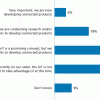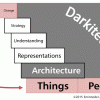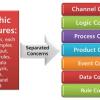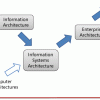Strategic advice to leverage new technologies
Technology is at the heart of nearly every enterprise, enabling new business models and strategies, and serving as the catalyst to industry convergence. Leveraging the right technology can improve business outcomes, providing intelligence and insights that help you make more informed and accurate decisions. From finding patterns in data through data science, to curating relevant insights with data analytics, to the predictive abilities and innumerable applications of AI, to solving challenging business problems with ML, NLP, and knowledge graphs, technology has brought decision-making to a more intelligent level. Keep pace with the technology trends, opportunities, applications, and real-world use cases that will move your organization closer to its transformation and business goals.
Recently Published
Darkitecture: The Edge of Architecture
This Executive Update shines a light on the "darkitecture" that envelops architecture, by first observing what enterprises do and then spotting the obvious blind spots indicated by what many organizations ignore.
The Agile principle of delivering working software frequently, in the shortest feasible timeframe, can scare DW/BI teams into avoiding Agile practices if they can't conceive of how they would deliver working software in a matter of weeks. However, teams that think creatively about how to work toward this principle have found effective approaches. In this article, I provide a case study that shows how one team approached this challenge: by identifying the business value in the steps of the DW/BI delivery process.
Comparing Business Rules and CEP
Externalizing business logic has long been a goal for EA. Business rules and complex event processing (CEP) are two ways to achieve this. So what are the differences between business rules and CEP architectures? And how can we use EA to prepare for using business rules or CEP?
Offering connected products can require a company to reinvent itself; in effect, to transform from a product-oriented business into a service-oriented business. Moreover, it is likely that it will also require the business to transition into a software and services provider -- at least to some extent.
A Brief History of Enterprise Architecture
This Executive Update provides a brief history of enterprise architecture to show its evolution and to highlight its key contributions over the past 40 years — from the first discussion of the term around 1975 to its 40th anniversary in 2015.
Containerization: A Boon for DevOps Within an Organization
A large percentage of businesses are looking for ways to stretch their operations budgets while their user bases grow. Containerization helps with this in a number of ways.
Software professionals have a hate-hate relationship with requirements. They hate that requirements have been an unsatisfactory guide to action, and they hate that they still depend on them. Agile resolved part of this dilemma, replacing the traditional requirements tome with user stories. Over time, the Agile requirements toolkit expanded to include epics, themes, storyboards, wireframes, story maps, and other types of content.















